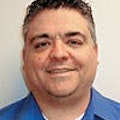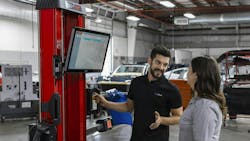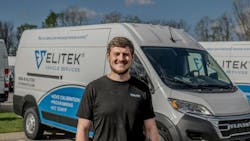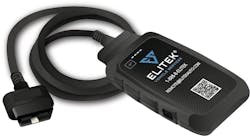When you think about it, working in the collision repair industry comes down to making an ongoing series of difficult choices that will determine if you succeed and how. Your first hard choice is joining a business market as competitive as auto body repair, where profit margins can be razor thin. From there, you have to decide where you want to operate and with how many square feet of shop, what vehicles you want to repair, what your personnel makeup will be (techs, estimators, painters, managers, etc.), and what work you will and won’t perform. Following these are ongoing choices in tools and equipment, which only seem to grow yearly as vehicles become more sophisticated.
Ultimately, you end up creating a formula composed of space, people, market, and equipment that must regularly be monitored and adjusted to keep the dollars rolling in. Your business really is one big calibration operation. Within this calibration is the need to figure out a way to provide required calibrating and scanning services.
Repair pre- and post-scans and module calibrations have challenged repairers for the past decade as shops have struggled with sending this work to dealers, where it may sit for days, or keeping it in-house and searching for ways to afford expensive equipment and repair subscriptions (for multiple vehicle brands and model lines). Added to these difficulties is the need to keep employees trained and available to perform these services.
Fortunately, a number of companies have come to the rescue with remote and mobile onsite services intended to help any shop perform scans and calibration on practically every vehicle. But there’s a catch. Here, too, you’ll need to make choices of which services to offer in-house, how, and which of these companies to work with. Use these seven tips to help you make critical decisions that will keep your shop efficient and profitable.
1. Get started the right way.
Do you think you should add mobile services (where a tech comes to your shop) for scanning and calibration work or add remote services (remote on-line help)? Or maybe you should utilize both? Then again, maybe you could simply perform all this work by yourself by limiting the vehicles you repair to a select number of brands. There’s no one right answer or model that can be applied to every shop or even most shops.
This part of your scanning/calibration journey starts with getting some outside help – namely from companies who have experience in this area. Glen Dixon, senior director, North America Mobile Operations, and Don Smith, senior director of Remote Operations at Elitek Vehicle Services, an LKQ company, note that their company has sales reps and general managers in the field throughout the U.S. for just this reason – to help individual shops navigate through their options and find the scanning/calibration setup that works best for them.
Smith says the setup “depends on the shop’s needs and objectives.” If they want to keep calibration and its profits in-house and use OEM-approved tools and information, remote services can work best. Dixon adds that remote services are a good entry point for some shops, but mobile has benefits, too, since it fills the gap created by tech shortages. “Remote is great when a job isn’t difficult, but a mobile tech is better able to tackle related issues like broken wires and module replacement ,” he says. “You have someone there who can get eyes and hands on a difficult service.”
Important here is that having one service doesn’t negate the other. Dixon adds, “They complement one another. It’s not an ‘either or’ choice. You can work with both.”
Other factors should be taken into account as well. Kris Bjerke, director of calibrations, R&D, and Implementations for asTech, says his company looks first at a shop’s work volume, specifically at repair orders per month, though he personally prefers to look at revenue.
“We look at the vehicle mix – Asian, European, and domestic – since that shows how complicated the calibrations can be and then calculate calibrations per repair order,” he says (European models often require more calibration time). “We take a holistic look at a shop, what work it does and its processes. This isn’t a one-size-fits all idea. Ultimately, we aim to fit into what a shop does and not disrupt it.”
2. Know your options.
Beyond remote and mobile options, scanning/calibration vendors offer other options that can help your business. For example, asTech offers in-shop help where they place one of their techs at your location to work full-time providing calibration/scanning services. Elitek’s mobile services can assist with full engine, transmission, and frame replacements, along with A/C services. Both companies also sell and lease equipment to make remote work more affordable. Additionally, Elitek offers a variety of subscription services and rates to increase accessibility while both companies also provide training to help shop employees stay up to date on equipment and calibration/scanning work.
3. Right-size your personnel.
As noted earlier, access to mobile services can help alleviate tech shortages since they bring in more help. Having someone else to do this work allows you to keep techs focused on repairs that are more profitable. Bringing in additional help this way benefits your bottom line by removing business costs of maintaining staff with expensive benefits such as healthcare, vacation, retirement, etc. It also frees shops to place its own employees where they work best and most profitably.
Bjerke adds that investing in mobile assistance can eliminate worries over employee turnover. “You’re not constantly having to train estimators, blueprinters, and other employees who are just going to go elsewhere,” he says. “It’s less expensive and simpler to have a vendor take care of it for you.”
4. Be prepared to make space.
If you haven’t in a while, review some of the service instructions for performing calibrations. You’ll note that space is very important for calibrating a number of modules, since minimum measurements are established in those instructions. Bjerke says a number of shops struggle with this task of finding sufficient space for calibrations, since most of their work footage was already dedicated to bays, paint areas, storage, offices, and other purposes before calibration became necessary.
“This can’t be ignored if you’re going to do calibration work, so you won’t be doing it right,” he says. “If you don’t open up the space, your only real option is sending this work over to a dealer.” Again, this is where working with a calibration/scanning vendor can help. Make sure your vendor has someone on board who can assist you with ideas to find the necessary space. Note that this kind of change to your shop probably isn’t the big chore you may think it is. Dixon notes that shops can do this if they really want to keep this work in-house. From his experience, he says, “I’ve never seen it be a serious problem. When a car needs to ship, the shop almost always is able to find the space we need to complete the calibration work.”
5. Make sure you’re supported.
Performing calibration work comes with some significant liability. Do it incorrectly and you could affect a vehicle’s safety and other systems, resulting in personal and property damage. Make sure your vendor can both do this work and will stand behind it. “We live in a litigious society, and you don’t want to open yourself up to that,” he says.
Aside from legal protection, you’ll want to look at vendors who can offer multiple services to you regardless of your geographic location. This can be a challenge in remote parts of some states like Montana and Wyoming, but both asTech and Elitek say they cover most of the U.S.
Finally, you should look at vendors who cover the vehicles you repair. Elitek says they cover virtually every brand or model from 2010 or newer, with the absence of some exotics like Maserati and Lamborghini. The same goes for asTech, but not every vendor offers the same coverage.
6. Address the details.
Elitek and asTech both note they want to partner with shops and are flexible when it comes to implementing their services. There also are steps you should take to be a better partner. Smith says shops needing mobile assistance should make sure mobile techs have direct access to a vehicle. “It shouldn’t be blocked in or have a dead battery that needs charging.” He also recommends shops invest in Wi-Fi strong enough to reach all bays so there aren’t any issues with connectivity.
Dixon says shops also should get vendors involved in the scanning and calibration processes as early as possible – especially during estimating and blueprinting. “This way, we can help identify any problem areas early on and even assist with repair planning and parts ordering,” he notes.
7. You’ll need to keep evolving your setup.
As your business changes, so will your scanning and calibrating needs. Business is always changing in the collision repair market. This is why you’ll want to continue working with vendors to readjust your calibration/scanning setup to maximize revenue and efficiency. Bjerke says asTech continually works with customers, reviewing repair orders and other information to ensure they’re getting the best possible help. Elitek does much of the same. Vendors like these are looking for long-term relationships where both sides benefit. You’ll want to work with someone who holds the same philosophy.
Scanning and calibration work looks to only become more challenging as automakers continue fine-tuning and adding technology. To survive, you’ll need to follow suit by evolving your operation, including your scanning/calibration setup. Ultimately, your goal is to create an ongoing formula that produces success in all parts of your work.
About the Author

Tim Sramcik
Tim Sramcik began writing for ABRN over 20 years ago. He has produced numerous news, technical and feature articles covering virtually every aspect of the collision repair market. In 2004, the American Society of Business Publication Editors recognized his work with two awards. Sramcik also has written extensively for Motor Age and Aftermarket Business World. Connect with Sramcik on LinkedIn and see more of his work on Muck Rack.



